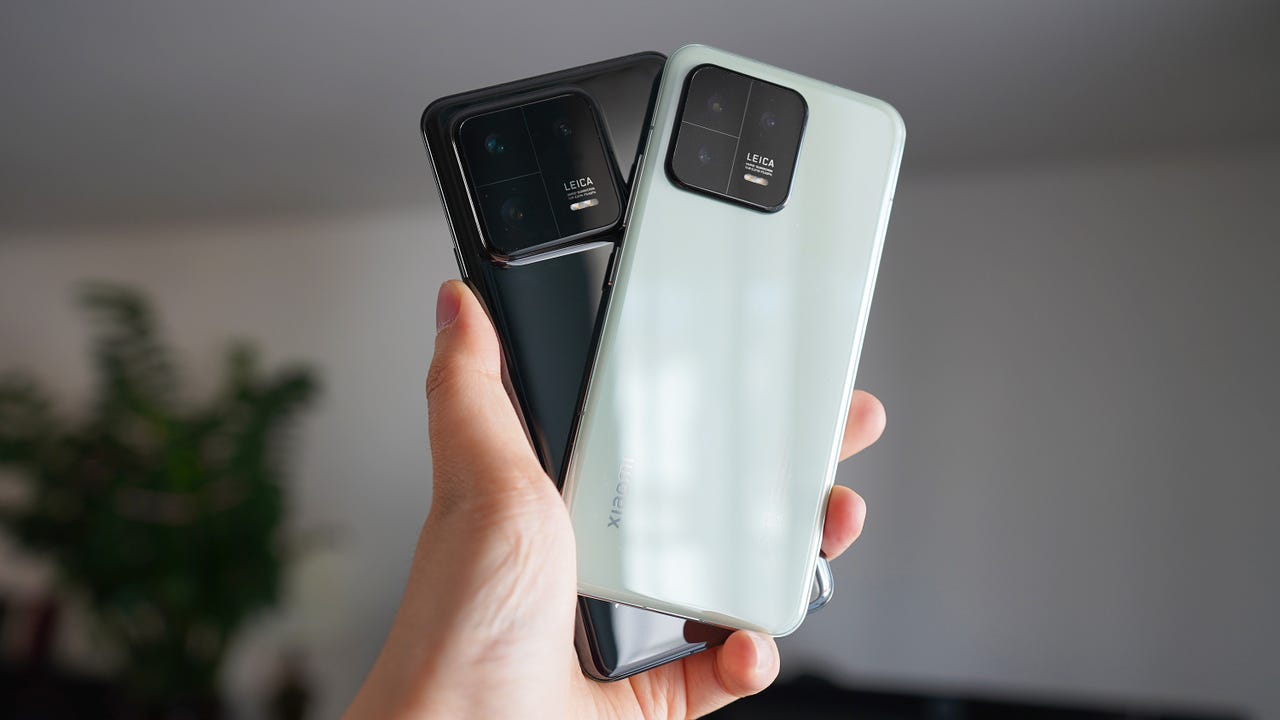
June Wan/ZDNET
Another set of flagship phones to rival the iPhone 14 Pro and Galaxy S23 have arrived as Xiaomi has unveiled its Xiaomi 13 smartphone, co-engineered with camera brand Leica and equipped with Qualcomm’s high-end Snapdragon 8 Gen 2 system on chip (SoC), with the Xiaomi 13 Pro battery taking just 19 minutes to charge.
The Xiaomi 13 and 13 Pro launched in China in December, but the company is now distributing the smartphones in Europe with the Leica engineering partnership. The Xiaomi 13 starts at €999 ($1,054, £849) while the Xiaomi 13 Pro starts at €1,299 ($1,371, £1,099). There’s also a Xiaomi 13 Lite from €499.
The Xiaomi 13 sports a 4,500mAh battery and Wi-Fi speeds of 3.6Gbps and is available with 8GB or 12GB of RAM, each with up to 256GB storage. It has a 10-megapixel (MP) telephoto camera, 50MP wide-angle camera, a 12MP ultra-wide angle camera, and a 32MP selfie camera in the display. It has a 6.36-inch full HD+ AMOLED display at a 20:9 aspect ratio with a 2400 x 1080 pixel resolution.
The Xiaomi 13 Pro has a larger camera bump, powered by Leica.
June Wan/ZDNET
The Pro has a 4,820mAh battery which can charge in 19 minutes with the 120W Xiami HyperCharge. It comes one-inch camera sensor and a 50MP telephoto camera, a 50MP ultra wide angle camera, and a 32MP in-display selfie camera. It’s available with 12GB of RAM and either 256GB or 512GB of storage.
The devices notably come with the Google services needed to maintain a smartphone, including three generations of Android system updates and five years of patches. Buyers also get a six month free trial for both Google One cloud storage of up to 2TB and up to 6 months of YouTube Premium with ad-free access to YouTube and YouTube Music app.
The devices also support Android’s digital car key feature, previously available with Google Pixel phones. Apple is also working to expand its digital car key iPhone offering with more automakers. Both iPhone and Android are currently limited to newer BMW models.
Tech analyst Canalys estimated there were 1.19 billion smartphones shipped in 2022. It predicts shipments to decline by -0.3% in 2023 but shipments of high-end smartphones are accounting for a greater share of the total. Shipments of smartphones above $800 grew from 11% in 2020 to 16% in 2021 and 18% in 2022.
“Demand for premium smartphones remains strong despite the economic headwinds. Chinese vendors are trying to get a slice of this growing segment by establishing their brand image through increased R&D investments,” Canalys said in a statement.